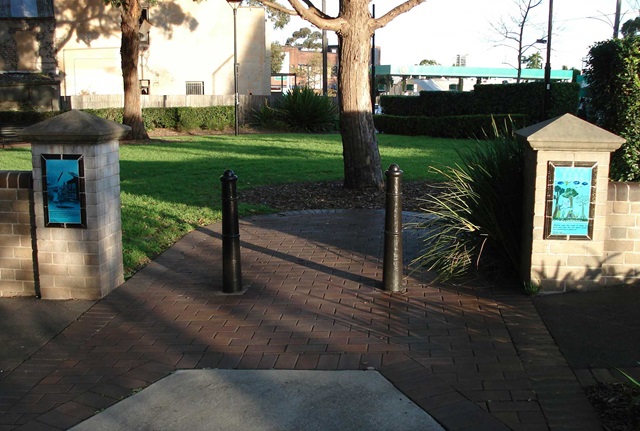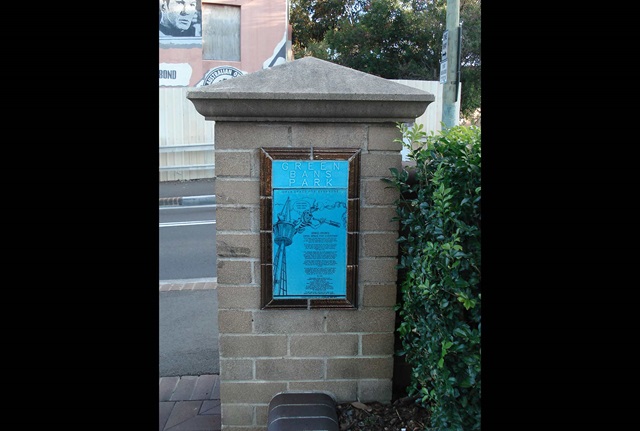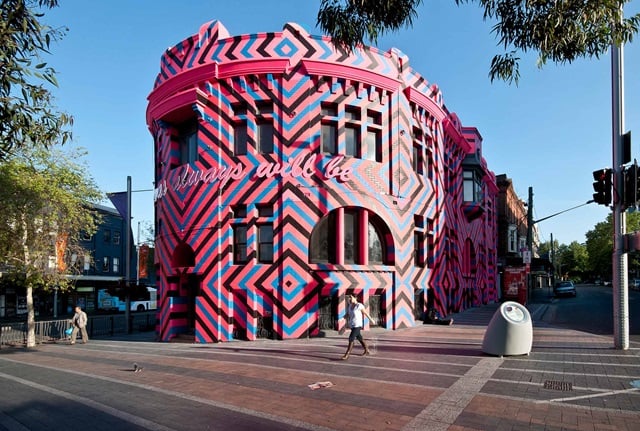

An 18 piece tiled frieze tells the story of community activism and the struggle to keep the Green Bans parks.
– Michael Keighery and Kate Dunn
Artwork description
Green Bans Parks are 2 small neighbourhood parks at the corner of Erskineville Road and Albert Street, Erskineville. They are rare pockets of open space in an area of high-density housing, train lines and narrow back streets.
Between 1992 and 1998 residents campaigned to save the land from being sold by the state government for redevelopment. The Construction, Forestry, Mining and Energy Union (CFMEU) joined the campaign and placed ‘green bans’ on any private development. It was this action that saved the parks, which is how they got their name.
The 18 tiles tell the story of the community activism that created the parks. Each frieze includes a panel of text and an image taken from archival and contemporary photographs, cartoons and drawings. Most of the text was drawn from the diary of Jim Plotrowski, an activist who kept a journal of the community struggle as it happened. There are also quotes from park users.
These artworks were commissioned by Sydney City Council in 1999. Michael Keighery and Kate Dunn found that there was very little documentation available about the history of the action to protect the parks. They drew heavily on the diaries of Jim Plotrowski and the photographs of Scott Wajon, another community activist.
The artists found that the challenge was to commemorate the park’s history while making the artwork relevant to today’s park users. They decided to try and achieve this by mixing humour with descriptions of campaign tactics.
As well as being decorative, the friezes are seen by the local community as a reminder of their long struggle to keep the parks. The friezes are made of raku clay with copper alkaline glaze fired to 1,100°, surrounded by metallic raku clay glazed frames.
Artists
Michael Keighery’s mixed media, ceramic-based and performance art is collected, respected and exhibited worldwide. From the Second Beijing International in China to the Huntington Gallery in Boston, USA, his work has been featured in major contemporary art events. He is also a long-standing local resident of Wilson Street, Newtown.
Kate Dunn has worked extensively in South Sydney, particularly with young people, and is a professional ceramicist who lectures at TAFE.







